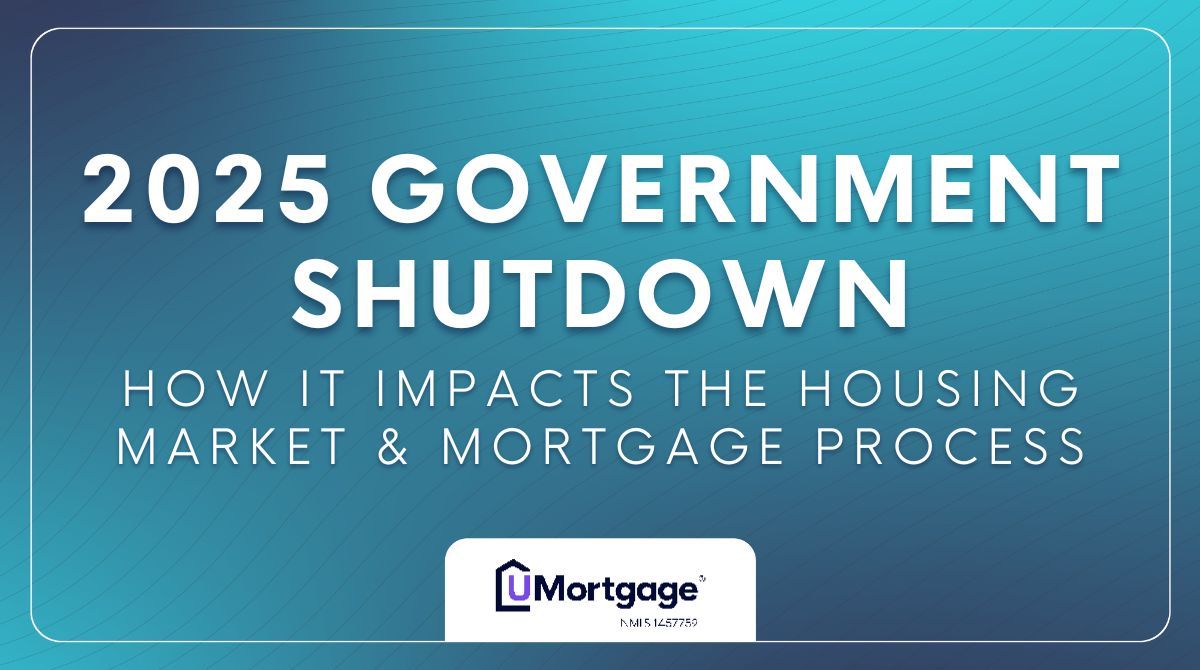How the 2025 Government Shutdown Affects the Housing Market
Published: October 17, 2025
Updated: October 20, 2025

How the 2025 Government Shutdown Affects the Housing Market
On October 1st, 2025, a shutdown of the federal government began. Believe it or not, government shutdowns can have a multifaceted impact on the housing industry and mortgages. To help you be prepared and stay in the know, here’s how the mortgage process and the housing market are affected.
Quick Answer
Closings haven’t stopped, but some files will move more slowly. FHA and VA are largely operating (with some limits), conventional loans continue to move under GSE guidance, USDA loans for new approvals are paused, and a lapse in the National Flood Insurance Program (NFIP) can block some flood-zone closings. Key economic reports are delayed, which can make mortgage rates prone to increased volatility when the shutdown ends.
How a Government Shutdown Impacts Mortgage Rates
During a shutdown, we get a “data blackout” from federal statistical agencies. For example, the September BLS labor report, which is typically one of the bigger market movers, was not released as scheduled on October 3rd. Other reports have been delayed; for example, our September CPI inflation report has been pushed to October 24, 2025.
With no economic data leading up to our next Fed Meeting on October 29, the markets can’t fully forecast whether the Fed will cut, which could result in fewer gradual movements and more rate swings.
Loan Programs: What’s Running and What’s Slowed
Non-government-backed loan programs, such as Conventional Loans, will not be impacted by the government shutdown. Specific government-backed programs, like FHA loans and VA loans, are largely unaffected, but delays may occur.
This shutdown most heavily impacts USDA loans. USDA Rural Development’s Single-Family Housing Guaranteed Loan Program largely pauses new activity. If a valid conditional commitment was already issued, some closings may proceed; otherwise, new USDA approvals will wait until staff return.
National Flood Insurance Program (NFIP)
The NFIP’s authority lapsed on September 30, 2025. Existing policies remain in force until expiration, but because of the shutdown, no new or renewed NFIP policies can be issued during the lapse. This can halt closings in flood zones that require NFIP coverage until reauthorization.
Underwriting & Operations Delays
If you’re a federal employee or contractor affected by a furlough, your loan may still be eligible. GSE guidance allows temporary flexibilities around employment verification; some files may need extra reserves if the shutdown extends.
If you’re a prospective homebuyer wondering if a government shutdown will impact your homebuying or refinance process, or a real estate agent concerned with the impact this shutdown may have on your buyers, get in touch with a UMortgage Loan Originator for expert advice. They’ll be able to tell you how to navigate the market, act proactively to avoid delays, and find alternate solutions to help you close on time or as quickly as possible.
